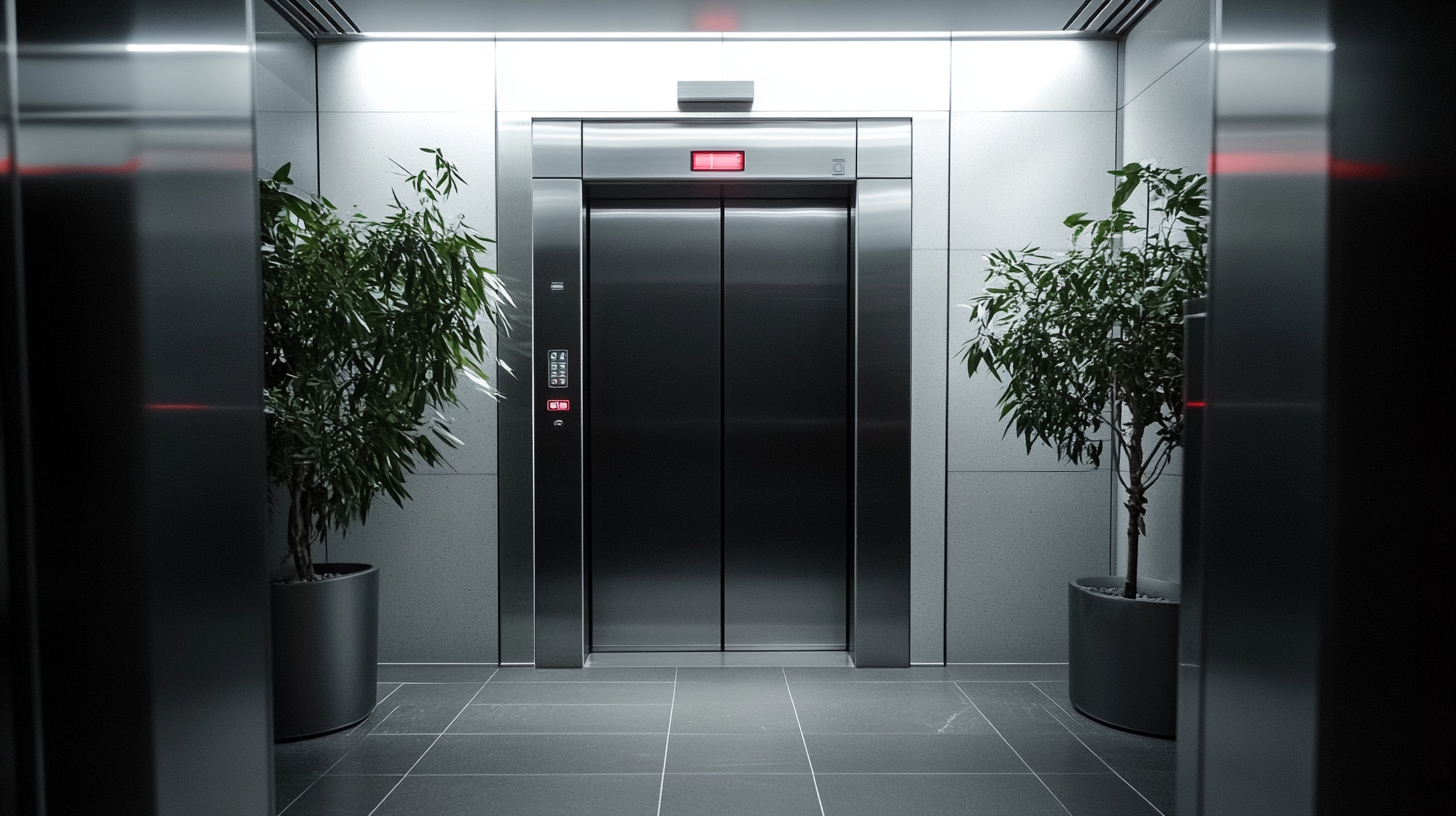Exploring Innovative Alternatives to Traditional Lifts: Insights from the Best Lift Company
In the rapidly evolving landscape of vertical transportation, the traditional lift system faces increasing competition from innovative alternatives that promise improved efficiency and sustainability. According to a recent report by the International Association of Elevator Engineers, the global elevator market is projected to reach USD 115 billion by 2025, driven by advancements in technology and growing urbanization. This shift highlights the imperative for leading players in the industry, particularly prominent lift companies, to adapt and innovate in response to emerging consumer demands for smarter, greener solutions. As we delve into this exploration of innovative alternatives to traditional lifts, we will draw insights from the best lift company known for its exceptional manufacturing prowess and export capabilities, embodying the excellence of Chinese manufacturing.

Innovative Lift Solutions: A Shift from Conventional Models
In recent years, the lift industry has witnessed a remarkable shift away from traditional lift models, driven by the need for more efficient and innovative solutions. Companies are now exploring a variety of alternatives that not only enhance functionality but also align with modern architectural designs and sustainability goals. These innovative lift solutions leverage advanced technologies, such as smart controls and energy-efficient systems, to provide seamless mobility within buildings while reducing their environmental footprint.
One noteworthy development is the introduction of machine-less lifts, which utilize cutting-edge rope-free technology to optimize space and reduce installation costs. This innovation allows for vertical and horizontal movement, making it ideal for complex building layouts. Additionally, modular lifts are gaining popularity for their quick installation and adaptability, enabling customization based on specific building needs. As the best lift companies continue to invest in research and development, we can expect even more groundbreaking advancements that challenge traditional paradigms and elevate the standards of vertical transportation.
The Rise of Vacuum Elevators: Safe and Space-Efficient Alternatives
Vacuum elevators have emerged as a compelling alternative to traditional lift systems, offering unique advantages that cater to modern architectural demands. Unlike conventional elevators that rely on cables and pulleys, vacuum elevators utilize air pressure differences to move the cabin vertically. According to a market analysis report by Mordor Intelligence, the global vacuum elevator market is projected to grow at a CAGR of 12.5% from 2021 to 2026, indicating a strong trend towards this innovative technology.

One of the most significant benefits of vacuum elevators is their space efficiency. These elevators require minimal structural modifications, often fitting into existing stairwells or tight spaces without the need for a separate machine room. This feature is particularly beneficial in residential settings and older buildings, where structural constraints commonly limit installation options. As highlighted in a report by Technavio, the demand for space-saving solutions is on the rise, with vacuum elevators serving as a practical choice for homeowners who prioritize maximizing living space.
Safety is another critical advantage of vacuum elevators. With no cables to snap and low mechanical complexity, the risk of failure is significantly reduced. The absence of a heavy machinery involved in typical elevators not only enhances safety but also lowers maintenance costs. A white paper by the International Elevator and Escalator Industry (IEEI) notes that vacuum elevators have lower energy consumption compared to traditional models, underscoring their appeal in an era focused on sustainability and efficiency.
Cable-Free Technology: Exploring Magnetic Levitation Lifts
The emergence of cable-free technology in the elevator industry is transforming how vertical transportation is conceived and executed. Magnetic levitation (maglev) systems represent a groundbreaking advancement, allowing elevators to move not only vertically but also horizontally. This innovative approach addresses limitations set by traditional cable elevators, increasing efficiency and flexibility in building design. According to recent studies, the ability to maneuver in multiple directions can significantly reduce wait times and improve the flow of movement within high-rise buildings, crucial factors in urban planning for densely populated areas.
The introduction of the world's first ropeless elevator exemplifies the potential of this technology. Unlike conventional systems that rely on cables and counterweights, maglev elevators depend on magnetic fields for movement, enabling them to travel up, down, and side-to-side. This revolutionary design could lead to optimized space usage in tall structures, allowing architects and developers greater creativity in building layouts. With a transport capacity potentially increased by up to 50%, the adoption of cable-free elevator systems could redefine efficiency in modern skyscrapers, elevating urban living to unprecedented heights.
Exploring Innovative Alternatives to Traditional Lifts: Insights from the Best Lift Company - Cable-Free Technology: Exploring Magnetic Levitation Lifts
| Feature | Traditional Lifts | Magnetic Levitation Lifts |
|---|---|---|
| Lift Mechanism | Cable and pulley system | Magnetic levitation technology |
| Energy Efficiency | Moderate | High, less energy consumption |
| Noise Level | Moderate to high | Very low noise |
| Maintenance Requirements | Regular inspections and repairs needed | Lower maintenance needs |
| Speed | Standard lifting speed | Faster acceleration and deceleration |
| Space Efficiency | Requires additional space for machinery | Compact design, requires less shaft space |
| Safety Features | Standard safety protocols | Advanced safety features due to lack of cables |
Sustainable Vertical Transport: Eco-Friendly Lift Options
As the world moves towards more sustainable solutions, the evolution of vertical transport systems is gaining momentum. Innovative lift alternatives are redefining the landscape of urban mobility, integrating eco-friendly technologies that contribute to a greener future. With a global push towards reducing carbon footprints, the importance of sustainable vertical transport cannot be overstated. Lifts are now designed with energy-efficient mechanisms and materials that minimize environmental impact, aligning with broader sustainability goals across multiple industries.
Moreover, the concept of vertiports, which facilitate various modes of transportation including eVTOL aircraft, further enhances the sustainability of urban transport networks. By leveraging these innovative structures in conjunction with modern lifts, cities are transforming how people move within urban spaces. The focus is not only on convenience and efficiency but also on reducing reliance on traditional fuel-based transport, making way for cleaner alternatives. As the elevators market is projected to grow significantly in the coming years, the integration of sustainable practices within this industry promises a more eco-conscious approach to urban living.
Smart Lifts: Integrating IoT for Enhanced User Experience
In the era of rapid technological advancement, the integration of the Internet of Things (IoT) into elevator systems marks a significant leap towards smarter urban living. Smart lifts, equipped with IoT capabilities, are transforming the user experience by offering enhanced convenience, safety, and efficiency. These systems allow for real-time monitoring and predictive maintenance, ensuring that elevators are always operational and reducing downtime significantly. By collecting data on usage patterns, smart lifts can adjust to demand dynamically, enhancing energy efficiency and contributing to sustainable building practices.
Moreover, the incorporation of IoT technology enables a seamless interaction between the elevator and users. By utilizing mobile applications, users can summon lifts from their smartphones, select their desired floor before arriving, or even receive alerts about waiting times. This not only streamlines the process but also caters to the needs of an increasingly tech-savvy population. Furthermore, the data collected can lead to a personalized lift experience, allowing customization in terms of lighting, music, and even tailored news or ads, making every ride not just efficient but also enjoyable. As the best lift company embraces these innovations, the future of vertical transportation promises to be not only smarter but more user-centric than ever before.

